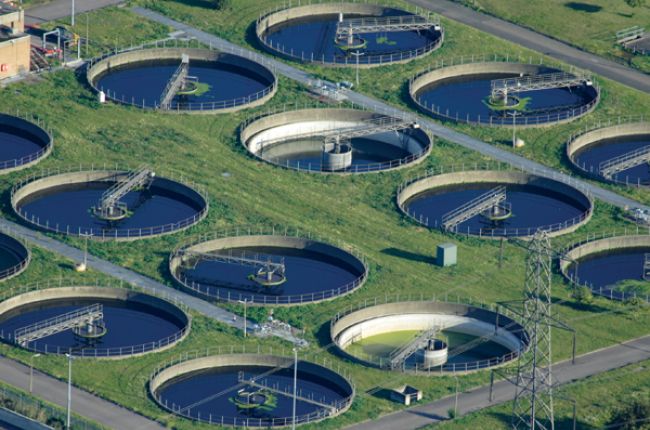Trick Obstacles in Urban Waste Water Treatment Approaches
Trick Obstacles in Urban Waste Water Treatment Approaches
Blog Article
Strategic Approaches to Boost Drainage Therapy Effectiveness and Decrease Ecological Impact
In the realm of waste water therapy, the quest for enhanced performance and minimized ecological influence is a continuous obstacle that demands calculated options. As culture grapples with the crucial to handle water sources sustainably, a nuanced technique comes to be crucial. The assimilation of innovative treatment innovations, energy-efficient processes, resource healing techniques, enhanced nutrient removal methods, and clever monitoring and control systems stands for a multifaceted framework for addressing these pressing worries. What lies at the core of this complex web of approaches is the prospective to revolutionize the means we approach waste water therapy, not simply as a procedure of disposal, yet as a useful opportunity for innovation and ecological stewardship.
Advanced Treatment Technologies
Innovative membrane purification systems have actually transformed innovative wastewater therapy processes, substantially boosting the elimination of contaminants. This innovation has actually shown to be very efficient in eliminating a broad array of impurities, including pharmaceuticals, heavy steels, and organic compounds, which are commonly challenging to get rid of through conventional treatment methods.
In addition, membrane layer purification systems supply numerous advantages over traditional treatment strategies. Additionally, these systems are highly functional and can be conveniently integrated into existing therapy plants or made use of as standalone systems for decentralized applications.
Energy-Efficient Procedures
The assimilation of energy-efficient processes in wastewater treatment systems is vital for maximizing source use and decreasing functional costs. One essential strategy to enhancing power performance in wastewater therapy is the usage of advanced oygenation systems, such as great bubble diffusers or surface area aerators, which can improve oxygen transfer effectiveness and lower energy consumption.
Moreover, optimizing process control and automation through the usage of sophisticated sensors and keeping track of systems can improve overall power performance by readjusting operations in real-time based on real demand and problems. Implementing power audits and routinely monitoring energy performance indications are essential methods to recognize locations for enhancement and track energy-saving efforts efficiently. In general, the adoption of energy-efficient procedures in wastewater therapy not only benefits the environment yet also adds to lasting expense savings and operational sustainability.
Source Healing Techniques
With a concentrate on maximizing source usage and sustainability in wastewater treatment systems, the execution of source recovery strategies becomes an essential aspect in boosting functional efficiency. Source healing strategies in wastewater therapy involve the recognition and extraction of useful resources from the waste stream, thereby turning what was once considered waste into a beneficial possession. By executing source recovery strategies such as nutrient removal and recuperation, energy generation from raw material, and the manufacturing of reusable water, wastewater therapy plants can lessen environmental effect while making best use of effectiveness.

Boosted Nutrient Elimination Methods
Executing advanced nutrient removal strategies is necessary for enhancing the efficiency of wastewater treatment systems. Boosted nutrient removal plays an important role in decreasing the ecological impact of treated effluent discharged into water bodies. Among the essential techniques made use of for improved nutrient elimination is the procedure of biological nutrient elimination (BNR), which includes the elimination of nitrogen and phosphorus with biological procedures. This can be achieved via the usage of specialized microorganisms that can transform nitrogen compounds right into inert nitrogen gas with denitrification, and accumulate phosphorus within their cells via a process called boosted biological phosphorus elimination (EBPR)

In enhancement to BNR, advanced therapy techniques such as membrane layer bioreactors (MBRs) and built wetlands can likewise be utilized to improve nutrient removal effectiveness. By integrating these sophisticated nutrient elimination techniques into wastewater treatment municipalities, systems and industries can efficiently minimize nutrient contamination and shield the atmosphere.
Smart Tracking and Control Solution
Using innovative innovation, the combination of smart monitoring and control systems changes the functional effectiveness of wastewater therapy centers. These systems integrate advanced sensing units and information analytics to continuously monitor vital criteria such as pH levels, turbidity, liquified oxygen, and flow rates in real-time. By gathering and examining this data, drivers can obtain important understandings right into the performance of the therapy processes, Full Report making it possible for positive changes to enhance therapy effectiveness.
Smart surveillance and control systems likewise sustain remote monitoring capacities, allowing drivers to access real-time data and control features from off-site locations. This remote access improves operational flexibility and responsiveness, allowing speedy interventions in situation of system breakdowns or fluctuations in influent top quality. Additionally, the anticipating upkeep capabilities of these systems assist protect against equipment failures and reduce downtime, eventually boosting the overall reliability of wastewater treatment procedures (Waste Water Treatment).
Final Thought
Finally, strategic techniques such as advanced therapy modern technologies, energy-efficient procedures, source recovery strategies, improved nutrient removal methods, and clever monitoring and control systems play a critical role in enhancing wastewater therapy efficiency and reducing ecological effect. By implementing these strategies, wastewater therapy plants can improve their overall efficiency, reduce energy consumption, recuperate valuable sources, and make sure compliance with environmental laws. These techniques are important for sustainable and efficient wastewater management practices.

In verdict, critical techniques such as innovative treatment modern technologies, energy-efficient procedures, source healing methods, improved nutrient removal strategies, and wise monitoring and control systems play a critical function in improving wastewater treatment efficiency and decreasing ecological influence.
Report this page